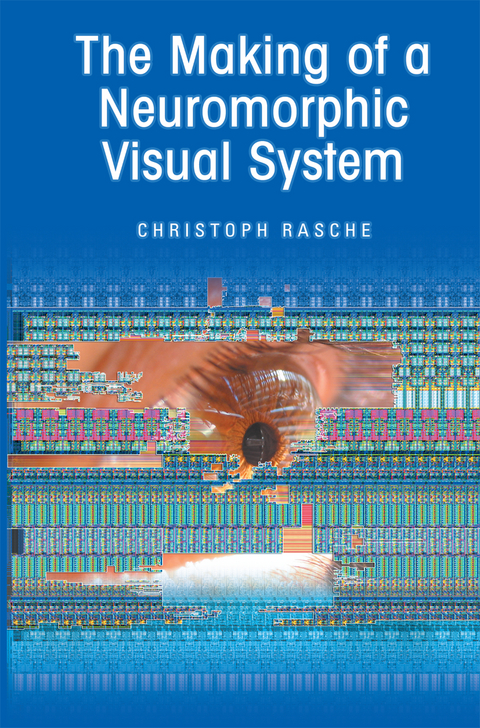
The Making of a Neuromorphic Visual System
Springer-Verlag New York Inc.
978-1-4614-9849-0 (ISBN)
During my effort to find such loose represen- tions, I have made sometimes unexpected experiences that forced me to continuously rethink my approach and to abandon or turn over some of my initially strongly believed viewpoints.
1: Seeing: Blazing Processing Characteristics
1.1 An Infinite Reservoir of Information
1.2 Speed
1.3 Illusions
1.4 Recognition Evolvement
1.5 Basic-Level Categorization
1.6 Memory Capacity and Access
1.7 Summary
2: Category Representation and Recognition Evolvement
2.1 Structural Variability Independence
2.2 Viewpoint Independence
2.3 Representation and Evolvement
2.4 Recapitulation
2.5 Refining the Primary Engineering Goal
3: Neuroscientific Inspiration
3.1 Hierarchy and Models
3.2 Criticism and Variants
3.3 Speed
3.4 Alternative ‘Codes’
3.5 Alternative Shape Recognition
3.6 Insight from Cases of Visual Agnosia
3 7 Neuronal Level
3.8 Recapitulation and Conclusion
4: Neuromorphic Tools
4.1 The Transistor
4.2 A Synaptic Circuit
4.3 Dendritic Compartments
4.4 An Integrate-and-Fire Neuron
4.5 A Silicon Cortex
4.6 Fabrication Vagrancies require Simplest Models
4.7 Recapitulation
5: Insight From Line Drawings Studies
5.1 A Representation with Polygons
5.2 A Representation with Polygons and their Context
5.3 Recapitulation
6: Retina Circuits Signaling and Propagating Contours
6.1 The Input: a Luminance Landscape
6.2 Spatial Analysis in the Real Retina
6.3 The Propagation Map
6.4 Signaling Contours in Gray-Scale Images
6.5 Recapitulation
7: The Symmetric-Axis Transform
7.1 The Transform
7.2 Architecture
7.3 Performance
7.4 SAT Variants
7.5 Fast Waves
7.6 Recapitulation
8: Motion Detection
8.1 Models
8.2 Speed Detecting Architectures
8.3 Simulation
8.4 Biophysical Plausibility
8.5 Recapitulation
9: Neuromorphic Architectures: Pieces and Proposals
9.1 Integration Perspectives
9.2 Position and Size Invariance
9.3 Architecture for a Template Approach
9.4 Basic-Level Representations
9.5 Recapitulation
10: Shape Recognition with ContourPropagation Fields
10.1 The Idea of the Contour Propagation Field
10.2 Architecture
10.3 Testing
10.4 Discussion
10.5 Learning
10.6 Recapitulation
11: Scene Recognition
11.1 Objects in Scenes, Scene Regularity
11.2 Representation, Evolvement, Gist
11.3 Scene Exploration
11.4 Engineering
11.5 Recapitulation
12: Summary
12.1 The Quest for Efficient Representation and Evolvement
12.2 Contour Extraction and Grouping
12.3 Neuroscientific Inspiration
12.4 Neuromorphic Implementation
12.5 Future Approach
Terminology
References
Index
Keywords
Abbreviations
| Erscheint lt. Verlag | 8.12.2014 |
|---|---|
| Zusatzinfo | XI, 140 p. |
| Verlagsort | New York, NY |
| Sprache | englisch |
| Maße | 155 x 235 mm |
| Gewicht | 454 g |
| Themenwelt | Medizin / Pharmazie ► Medizinische Fachgebiete ► Neurologie |
| Medizin / Pharmazie ► Physiotherapie / Ergotherapie ► Orthopädie | |
| Medizin / Pharmazie ► Studium | |
| Naturwissenschaften ► Biologie ► Humanbiologie | |
| Naturwissenschaften ► Biologie ► Zoologie | |
| Technik ► Elektrotechnik / Energietechnik | |
| Technik ► Medizintechnik | |
| Technik ► Umwelttechnik / Biotechnologie | |
| ISBN-10 | 1-4614-9849-X / 146149849X |
| ISBN-13 | 978-1-4614-9849-0 / 9781461498490 |
| Zustand | Neuware |
| Haben Sie eine Frage zum Produkt? |
aus dem Bereich


